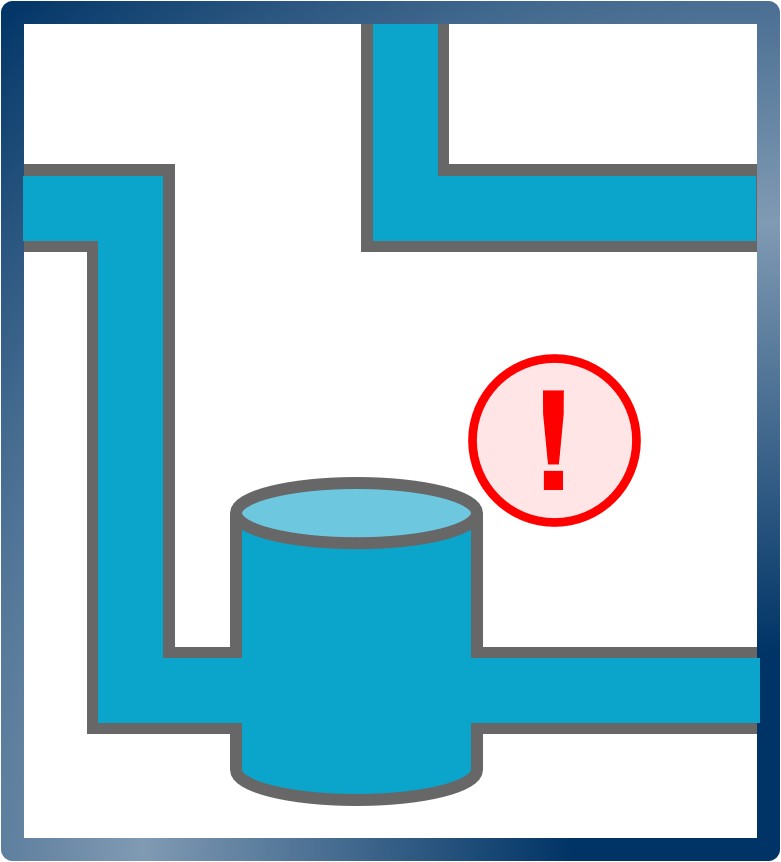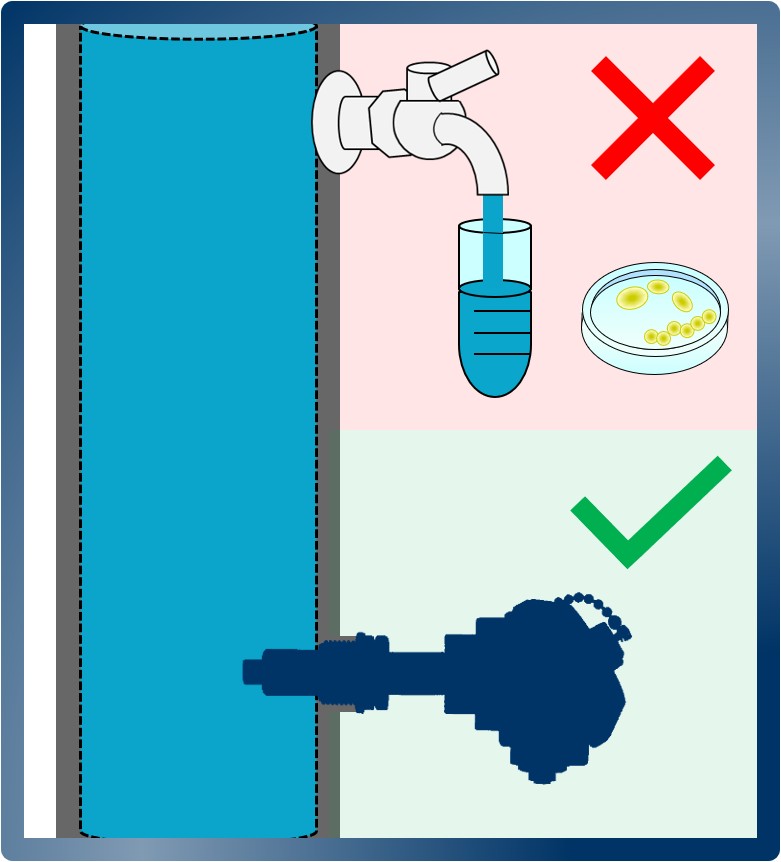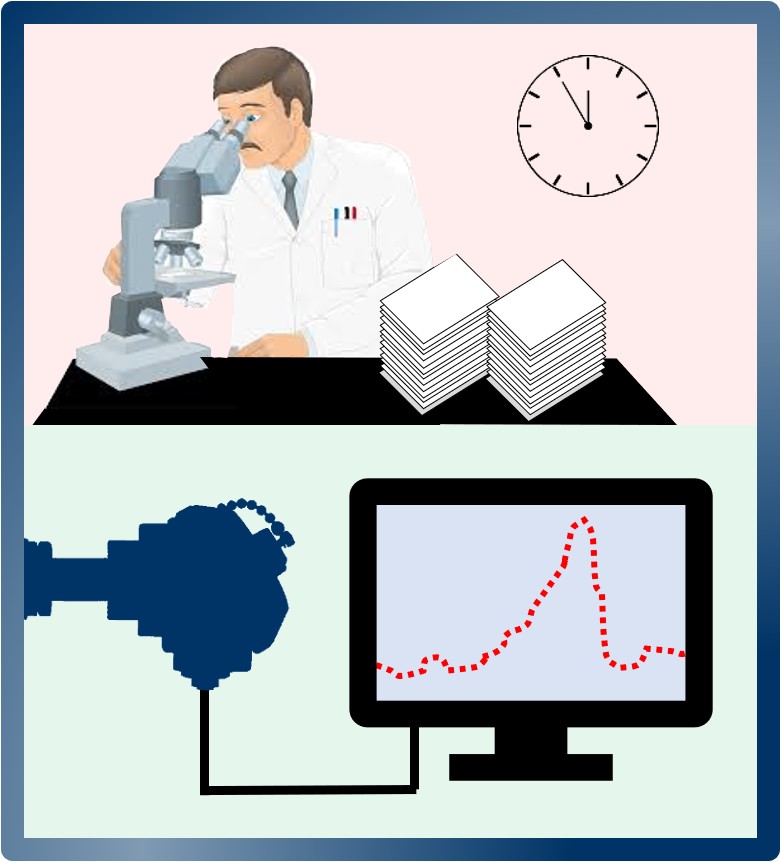HACCP and Biofilm [Download this white paper as PDF file]
Water and other liquids are largely employed in the Food and Beverage industry. Different kinds of contamination can deteriorate the quality of these resources, ultimately affecting the safety of final products - and thus of consumers. In particular, bacterial proliferation represents one of the most critical threats to food safety. The settlement of bacteria on surfaces in contact with liquids - a biological phenomenon known as "biofilm" - represents a ubiquitous problem in food production plants. Indeed, the vast majority of bacteria - up to 90% and more - live in biofilm, and not free in the liquid. For this reason, compared to standard liquid sampling and analysis, the application of online, real-time biofilm monitoring technologies represents a much more effective approach to microbial control. With this respect, the ALVIM System allows industrial players to detect biofilm growth with high sensitivity, optimize the sanitation treatment of production lines, and remove biofilm as soon as it starts to grow.
The biofilm monitoring approach is an integral part of a modern process control system known as Hazard Analysis and Critical Control Points (HACCP). This internationally regulated approach, which is based on scientific principles, aims at safeguarding food from biological, chemical and physical hazards. Based on risk assessment, the HACCP system allows to locate where hazards might potentially occur in the food production process - and to put stringent actions in place, to prevent possible issues. The HACCP system is based on seven principles:

(1) Conduct a hazard analysis
The first HACCP principle states that, in order to effectively plan preventive measures, the first step to be planned is the identification of potentially occurring hazards. This is achieved by means of an appropriate analysis of risks. When it comes to microbial proliferation, biofilm growth represents a threat to all production plants making use of water and other liquids. As a consequence, to fulfill HACCP regulations, biofilm monitoring should be always applied. Unfortunately, the issue of biofilm development is still largely underestimated by professionals operating in the Food and Beverage.

(2) Identify critical control points
The second HACCP principle regulates how to select and identify a critical control point (CCP). In a food production process, a CCP is a point, step, or procedure at which control can be applied. CCP monitoring allows to prevent, eliminate, or reduce to an acceptable level any food safety hazard. As per HACCP requirement, only objective parameters can be measured, including for example biofilm growth. CCPs for biofilm monitoring are commonly selected where microbial proliferation is expected to take place quickly, and more frequently compared to other sections of the piping system.

(3) Establish critical limits for each CCP
The third HACCP principle sets the reference values among which a CCP can be considered under control. The concept of critical limit - a value above which the safety of the process is compromised - is also introduced. When such value is exceeded, immediate intervention is required to bring it back below critical limits. Reference intervals are defined by Good Manufacturing Practices (GMP) and other regulations. For what concerns bacterial growth on surfaces, any layer of biofilm represents a critical limit - indeed, the only acceptable amount of biofilm is ''zero''. To meet this aim, ALVIM probes provide an early-warning indication of biofilm growth, allowing to readily eliminate microbial slime as soon as it starts to form - thus satisfying HACCP regulations.

(4) Establish CCP monitoring requirements
The fourth HACCP principle describes the requirements of CCP monitoring techniques. Noteworthy, the HACCP regulation requires that all CCP monitoring systems should provide real-time results. As a consequence, long analyses, that provide results in several hours or even days, fall out of HACCP requirements. Therefore, sampling and laboratory analysis of biofilm are not eligible for HACCP procedures - while online, real-time biofilm monitoring fully satisfies HACCP requirements.

(5) Establish corrective actions
The fifth HACCP principle regulates how to plan corrective actions - to be taken when analytical measurements exceed critical limits. Immediate intervention is particularly important when biofilm contamination arises, since its development is exponential, and it cross-contaminates other parts of the piping system. To readily eliminate biofilm, different kinds of cleaning and sanitation treatments are applied, usually based on the dosage of chemicals known as biocides. More information regarding biocides treatments can be found in this white paper.

(6) Establish procedures for ensuring the HACCP system is working as intended &
(7) Establish record keeping procedures
Finally, the sixth and seventh principles regulate validation, verification and record keeping procedures related to HAACP plans. Unfortunately, despite HACCP regulations clearly indicate how to operate, several old-fashioned microbial control approaches are still applied in Food and Beverage companies. Indeed, as discussed above, it happens quite frequently that the assessment of bacterial growth is still often limited to not-fully-reliable practices such as liquid sampling and analysis. To avoid hazards, it is very important to raise awareness on the importance of fulfilling HACCP regulations and adopting safe and reliable preventive measures. Moreover, the ALVIM System allows for an automated analysis, data acquisition and storage, instead of a manual procedure, prone to many possible errors.
To sum-up, ALVIM Biofilm Monitoring Technology represents one of the most effective tools to prevent microbial threats - in full agreement with HACCP regulations. By providing an early-warning indication of microbial growth, the ALVIM System allows to optimize cleaning and sanitation treatments - and ensure the safety of food production.
|
Do you have biofilm-related issues?
|





